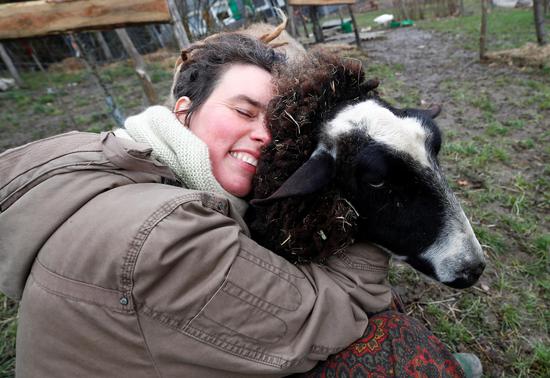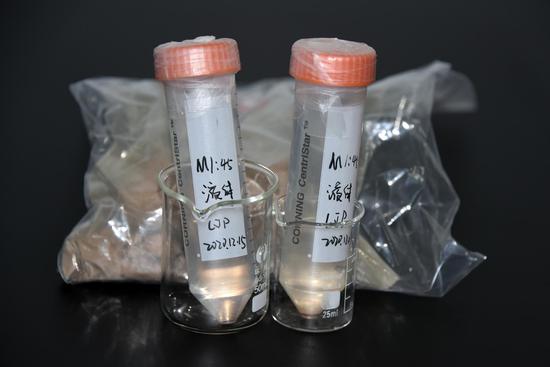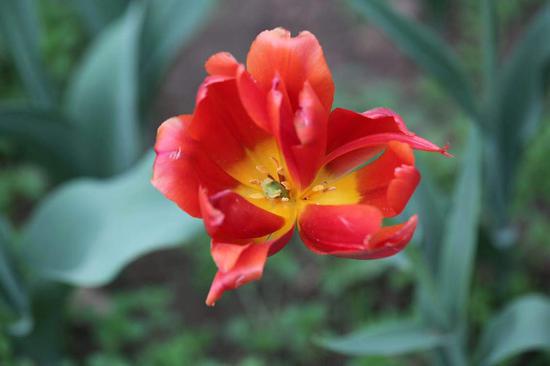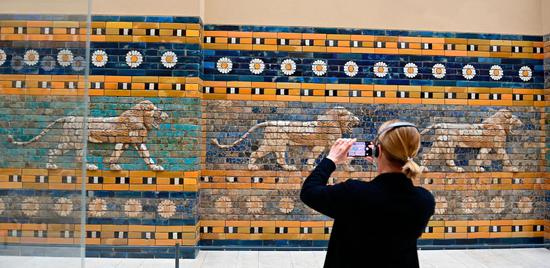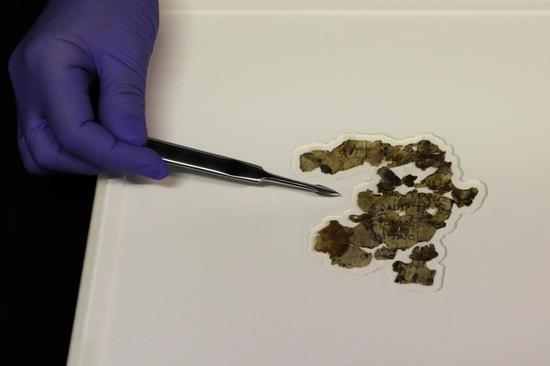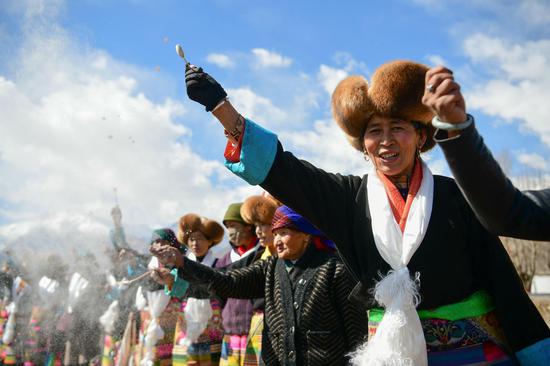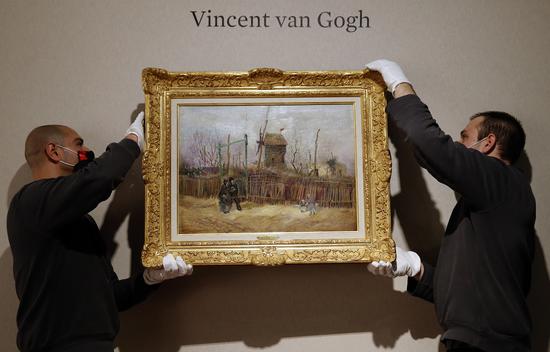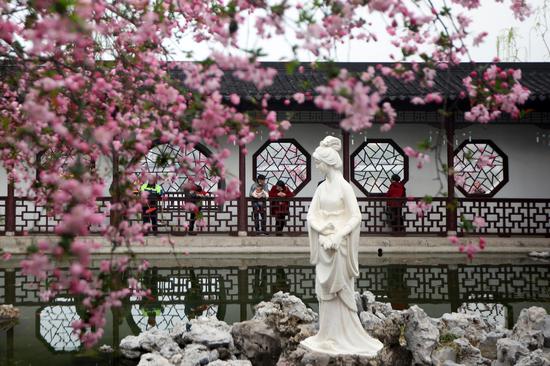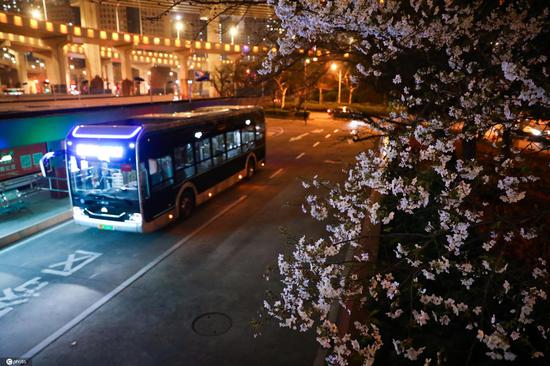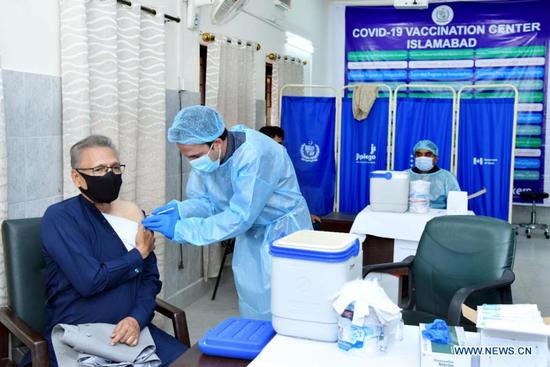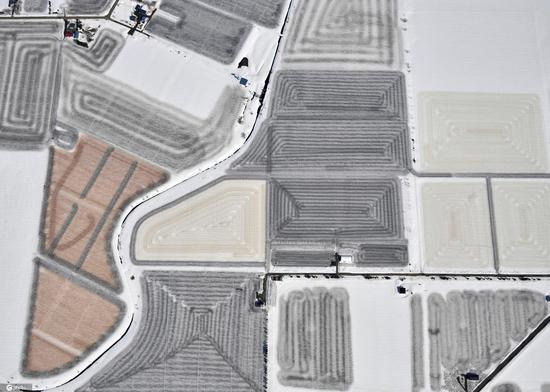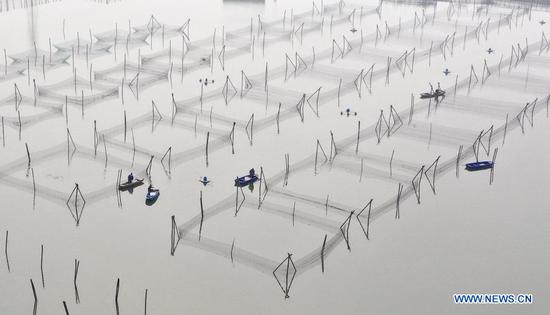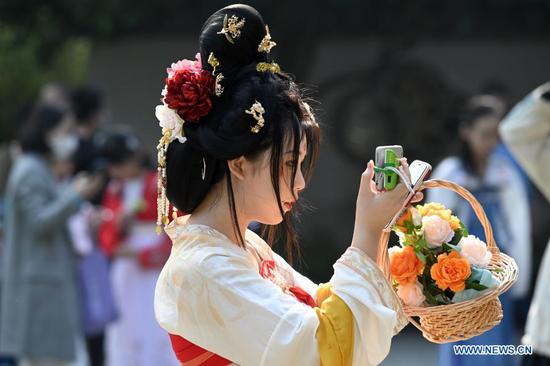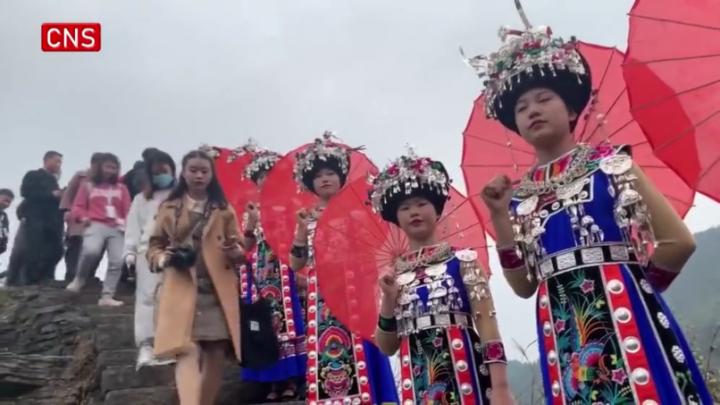
Archaeologists study the No 3 sacrificial pit at the Sanxingdui Ruins in Guanghan, Sichuan province, on Friday. (Photo/Xinhua)
Nevertheless, some new types of artifacts have been unearthed.
For example, in No 3 pit, a rich reservoir for bronze ware, archaeologists found two square zun jars, a typical ancient Chinese bronze ritual vessel, according to Lei. Such artifacts were not found in 1986. Some of the bronze ware items have been decorated with dragon and ox patterns.
In the No 6 pit, a 1.5-meter-long and 40-centimeter-wide wooden box covered in cinnabar has brought a new mystery. A plan to open it is still being drafted.
Other important items include decorative gold items in the shape of birds, ivory and bone carvings, silk and cong-a jade artifact originating from the 5,000-year-old World Heritage Site Liangzhu Archaeological Ruins in Zhejiang province, more than 1,800 kilometers away.
"These artifacts show the Sanxingdui site had a close connection with Central China, but it also marks an original ancient civilization (in Sichuan) with strong creativity," said Chen Xiandan, a member of the project who also took part in the 1986 excavation.
For interdisciplinary research at Sanxingdui, 34 research universities and research institutes are cooperating on the ongoing project. To better conserve the unearthed relics and analyze the findings in time, separate excavation structures cover each of the pits, and laboratories with high-tech equipment are on-site. No such approach has been used previously for archaeological excavation in China.
"Conservation of the relics is processed simultaneously with the archaeology," Lei said. "The focus is not only put on the artifacts. We don't want to miss any information hidden in the soil."
Song Xinchao, deputy director of the National Cultural Heritage Administration, said the ongoing scientific research at Sanxingdui sets an example for Chinese archaeology in the new era.
"It's an open platform to combine nationwide efforts for academic issues," Song said. "We'd like overseas teams to join the research as well."
Lei expects the findings at Sanxingdui will help to create a system for studying the Shu civilization, combining research at nearby sites in Sichuan.
The Sanxingdui study is listed as a part of a long-lasting program called Archaeology China, that was launched by the National Cultural Heritage Administration focusing on early-stage Chinese civilization.
"Being put in a bigger picture, Sanxingdui will contribute to our exploration of how Chinese civilization was formed mixing different cultures together," Song said.
"Sanxingdui and sites in Central China reflect some shared cultural values, breaking down the barriers brought by long geographic distance," said Zhang Changping, an archaeology professor at Wuhan University. "Such cultural identity created a foundation for a united country of China in a later time."
The latest discoveries at Sanxingdui have generated great public interest. From Saturday to Tuesday, a two-hour livestream broadcast on the archaeological site is being organized for each day. On social media platform Sina Weibo, three out of the top 10 most searched topics on Saturday were about the Sanxingdui Ruins.















